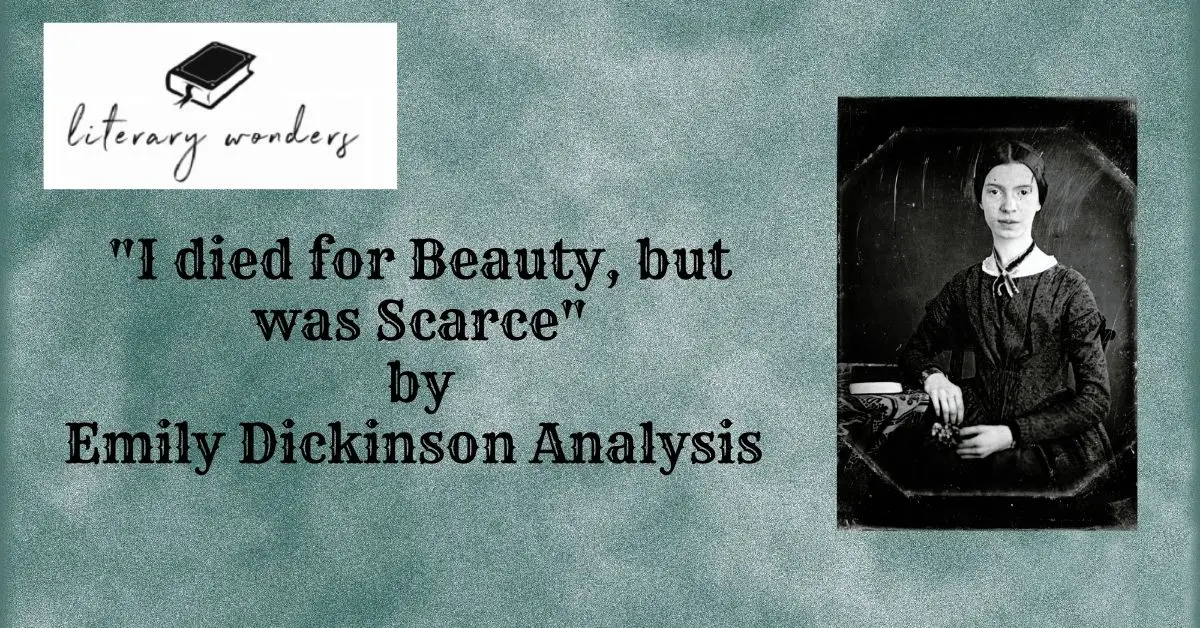The article, I died for Beauty, but was Scarce by Emily Dickinson Analysis determines to highlight the writer’s ideas about the afterlife and possible life to follow. The poem begins when the speaker introduces us to the concept of death. She explains that she died for Beauty while his neighbor in grave died for truth.
The reason for their death shows that they might have paid an ultimate price for living, and are now lying peacefully in their graves, having the same notions. The person in the second grave asks the speaker how she failed in life. The word fails is a clue that the neighbor might die too young or in awful circumstances. However, the reply of the speaker highlights that she died following a noble cause, and so is her neighbor.
Thus, it shows that Beauty and truth belong to the same ideal; they are inseparable. Therefore, the two newly entombed people accept their fates as bloodless brothers. Communicating through endless nights, the two anonymous speakers get lost in the lap of Mother Nature as moss grows up to their tombs. The Beauty and truth lies in the natural world, implying nature takes back what belongs to her.
Major Themes I died for Beauty, but was Scarce
The significant themes incorporated in the poem are death, beauty, truth, and mystery. The poem takes the readers into the afterlife to show that death does not end our life. Instead, it transports us to another world. She explains that death could not take her senses; she knew that she died for a cause. Similarly, the person in the adjutant tomb had his own reason for failing. Their smooth and lifelike communication shows that life after death is not horrific. It provides us a chance to exchange thoughts, like how we spent our lives and what became the reason for our demise.
The speaker has also praised the concepts of truth and beauty in the poem. To her, these two ideas are inseparable; they live and die together. Another possible interpretation of the poem is that people who live for beauty and truth follow the same path even after death. They keep praising these two concepts until their speech is taken away.
Although the speaker and her neighbor have met their ends, yet they still adore the reason of their survival and death. They still remember their struggles in life and love to keep talking about the same concepts. If we dig the poem further, we know that the writer has presented a fascinating concept of death and the afterlife.
In her vision, death is not something horrific but a peaceful transformation to another world. It does not snatch the joys but provides us neighborhood to exchange our thoughts. In other words, the writer wants us to accept our fates without creating a hue and cry. We all know that death is an unavoidable truth of life. Therefore, instead of avoiding it, one should have the courage to accept it.
Poetic Techniques Used in I died for Beauty, but was Scarce
“I died for beauty” is packed with various literary and poetic devices, which the writer has used to make her poem unique. The poem contains three quatrains following abcb rhyme schemes. However, in each stanza, there are dashes and pauses. Emily’s poems are unique due to the insertion of long dashes and pauses. Their purposeful usage allows the readers to stop and dig the writer’s idea comprehensively.
Moreover, the use of enjambment in the poem shows the same idea that runs parallel between the lines. Emily has talked about truth and beauty in the poem. Therefore, she did not use punctuation marks at the end of the verses. This technique helped her express her thoughts impressively.
In addition to this, she has inserted captivating images in the poem to help people visualize after-life. With the help of these images, one can quickly enter into the world the writer has created using her poetic intelligence. Besides these techniques, she has also used metaphor, symbolism and irony in the poem to talk about death and the world hereafter. She has used death as an extended metaphor to show its dominance. Symbols like tomb, moss, room and nightstand for the life one will witness after demise.
Suggested Articles: https://literarywonders.com/the-runaway-by-robert-frost-analysis/

